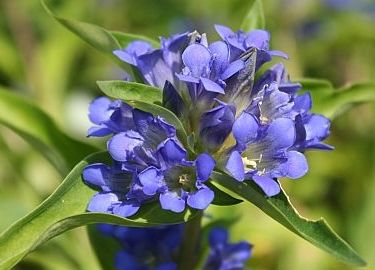Nature has been a source of medicinal agents for thousands of years, however, in the recent past these plants are declining very rapidly at an accelerating rate which may result in the disappearance of bio-diversity and valuable genetic resources. Unfortunately, the pharmaceutical industries are largely dependent on natural population of these medicinal plants which is depleting their wild stands Thus, there is a need for doing extensive research mostly on traditional medicinal plants.
The World Health Organization has also recommended to actively promote the use of natural medicines based on their beneficial effects and also to initiate steps to cultivate and conserve the fast disappearing medicinal plants. Hence, introduction of this species to in vitro culture, aiming at development of efficient methods of micropropagation is required so as to obtain large number of healthy viable plants in shorter duration of time. According to the Food and Agricultural Organization (FAO) at the United Nations annually the flora bares irretrievable losses which is destroying the ecological equilibrium. Four thousand to 10 000 medicinal species were listed as endangered of disappearing at the beginning of this century. To stop the violence against nature, efforts should be directed both to preservation of the plant populations and to elevating the level of knowledge for sustainable utilization of these plants. To solve this global problem cultivation of the valuable species in experimental conditions is one of the approaches which refer to the application of classical methods for multiplication by cuttings, bulbs, and so forth, as well as by biotechnological methods of in vitro cultures and clonal propagation for production of enormous number of identical plants. The micropropagation is considered to have the greatest commercial and economical importance for the rapid production in lesser time and ex situ conservation of rare, endemic, and endangered medicinal plants.
One of the plant species Gentiana kurroo which was reported to occur commonly or abundantly about half a century ago have at present became very rare due to over exploitation/habitat loss and have fallen in the category of critically endangered species. It is a rosette‐forming small perennial herb also known as Indian Gentian, Neelkanth, karu and chireta. It is primarily found in the North-Western Himalayas at an altitudes from 5,000-11,000 ft. Plants of this species also occur in Pathrala thatch, Karol Tibba Solan, and Mangarh area of District Sirmour at an altitudinal range of 1700 to 2000m at mean sea level. This plant species prefers to be overshadowed by the tall shrubs and grasses, low temperature, heavy wind and high insolation. Roots are soft, feathery, creamy white penetrating deep into the sandy-loam soil. Rhizomes and roots of this plant are used as a bitter tonic, antihelmintic, astringent, cholagogue, emmenagogue, febrifuge, refrigerant, antiperiodic, expectorant, antibilious, blood purifier and carminative. It is also used in the treatment of skin diseases (leucoderma), urinary infections, bronchial asthma, exhaution from chronic diseases, weakness of digestive system and loss of appetite. Recently, it has been reported that roots and rhizomes of G. kurroo were able to activate immune system in mouse model system having anticancer anti-inflammatory and immunomodulatory activity. The roots of this herb are a source of iridoid glycosides‐Gentiopicrine, Gentiamarin and the alkaloid Gentianin. Phytochemical screening of the plant also showed that the roots of Gentiana kurroo are rich in various active ingredients (secondary plant metabolites such as tannins, flavonoids, phenolics, cardiac glycosides, terpenes and alkaloids). Flavonoids, alkaloids and terpenoids in the plant may be responsible for its effects as analgesic, anti‐malarial properties and its use in treatment of stomach disorder. Because of its high demand in international market and limited supply from natural resources, it is known to be adulterated /substituted with roots of Picrorrhiza kurroa, G. tenella, G. decumbens, Gentiana lutea etc. The cases where the vegetative organs (root, rhizome) or reproductive organs (fruit, flower seeds) are used, the species are much more in danger of extinction in comparison to a species from which only leaves have been collected.
Due to multiple medicinal uses, overexploitation of this medicinal herb in unscientific manner by unskilled labor and poor natural regeneration has resulted in a virtual extinction. According to IUCN this drug plant, heavily extracted from its natural habitat is declared as a critically endangered medicinal plant. Hence, the Ministry of Commerce, Government of India has put it in the negative list of exports vide Notification no. 2 (RE-98) 1997–2002 dated 13 April 1998.
This article attempts to highlight the endangered status of this species which requires immediate and urgent attention to restore them by prescribing sustainable harvest regime and cultivation of this medicinal plant in experimental conditions.
